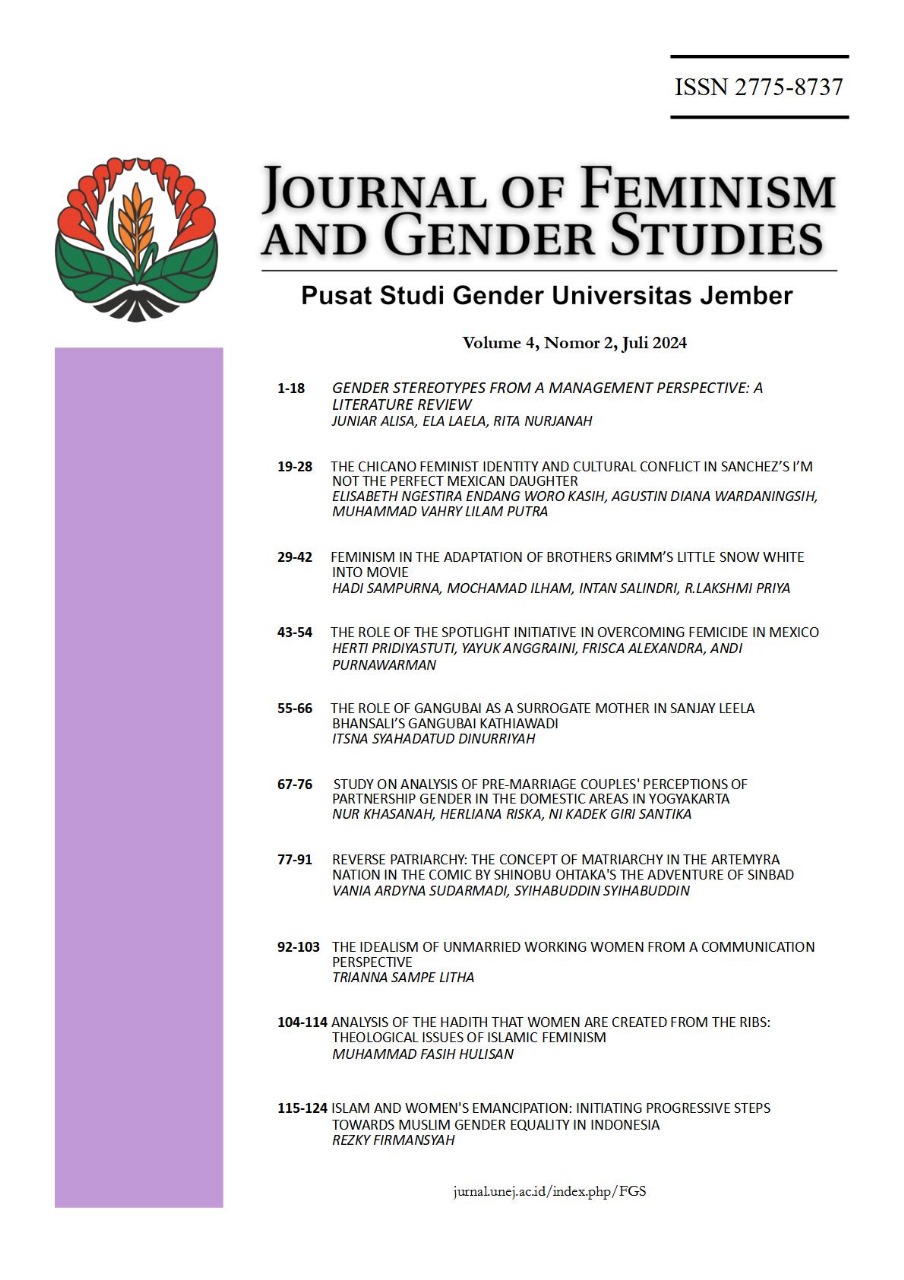Analysis of The Hadith That Women are Created from The Ribs: Theological Issues of Islamic Feminism
Abstract
One of the theological issues in Islam is the concept of human creation. Within the scope of the issue of human creation, there is also a discussion of the origin of the creation of women in the hadith. The Hadith about women being created from a rib is one of the theological issues in the issue of Islamic feminism. Therefore, this research is intended to find the location of problems related to the understanding of the hadith, then offer a new view in parsing the theological problems of Islamic feminism and try to produce a reconstruction of understanding of the hadith about women created from ribs. This research uses a qualitative method with a type of library research, accompanied by a hadith criticism approach. This research reveals that the wording of the hadith "women were created from ribs" is more accurately interpreted as a figurative meaning (majazi). So that the reconstruction of the meaning of the hadith leads to a positive connotation and avoids misogynism. Furthermore, the implicit wisdom of the hadith shows that there is a prophetic treatise that leads to education for women to be intensified, as Fethullah Gülen's view in interpreting the hadith.
References
Anam, H. F. (2019). Tafsir Feminisme Islam: Kajian Atas Penafsiran Riffat Hassan terhadap Q.S Al-Nisa [4]: 34. MAGHZA: Jurnal Ilmu Al-Qur’an Dan Tafsir, 4(2), 161–176. https://doi.org/10.24090/maghza.v4i2.3071
Gunawan, A. (2022). Interpretasi Hadis tentang Penciptaan Perempuan dari Tulang Rusuk Laki-Laki dan Kesetaraan Gender Menurut M. Fethullah Gulen. Jurnal Iman Dan Spiritualitas, 2(2), 279–286. https://doi.org/10.15575/jis.v2i2.18515
Hatib Rachmawan. (2022). Studi Hadis Digital: Penggunaan Software Jawami’ al-Kalim dalam Kajian Hadis. Yogyakarta: UAD Press.
Ibnu Hajar al-Asqalani. (2011). Fath al-Bari bi Syarh Shahih al-Bukhari (Vol. 6). Beirut: Dar al-Ma’rifah.
Imam An-Nawawi. (2009). Syarah Shahih Muslim (Vol. 11). Jakarta: Darus Sunnah.
Kementerian Agama RI. (2022). Qur’an Kemenag. Jakarta: Lajnah Pentashihan Mushaf Al-Qur’an. https://quran.kemenag.go.id/
Mahmud Thahhan. (2018). Musthalah Al-Hadis (3rd ed., Vol. 3). Ummul Qura.
Melta Adelia Putri Kurniandi. (2023). Kesetaraan Gender Perspektif Asghar Ali Engineer: Tantangan Dan Peluang Bagi Feminis Teologis. Journal of Feminism and Gender Studies, 4, 89–95. https://jurnal.unej.ac.id/index.php/FGS/index,
Mubaidi Sulaeman. (2020). Reinterpretasi Hadist Mesoginik Tentang Penciptaan wanita Dari Tulang Rusuk Laki-Laki. El-Faqih: Jurnal Pemikiran Dan Hukum Islam, 6(2). https://ejournal.iaifa.ac.id/index.php/dirasah
Muhammad Fethullah Gulen. (2014). Islam Rahmatan Lil’alamin. Jakarta: Republika.
Muhammad Iqbal Syauqi. (2024, March 27). Memahami Hadits ‘Perempuan Tercipta dari Tulang Rusuk Kaum Adam.’ NU Online. https://islam.nu.or.id/ilmu-hadits/memahami-hadits-perempuan-tercipta-dari-tulang-rusuk-kaum-adam-SL1V7
Syarif Hidayatullah. (2022). Teologi Feminisme Islam. Yogyakarta: Pustaka Pelajar.
Yunahar Ilyas. (2001). Perspektif Gender dalam Islam: Pendekatan Tafsir al-Quran dan Kritik Hadis. Mimbar, 3(3).
Yusni Amru Ghozaly. (2017). Fiqh Al-Hadis. Jombang: Pustaka Tebuireng.

This work is licensed under a Creative Commons Attribution-ShareAlike 4.0 International License.











